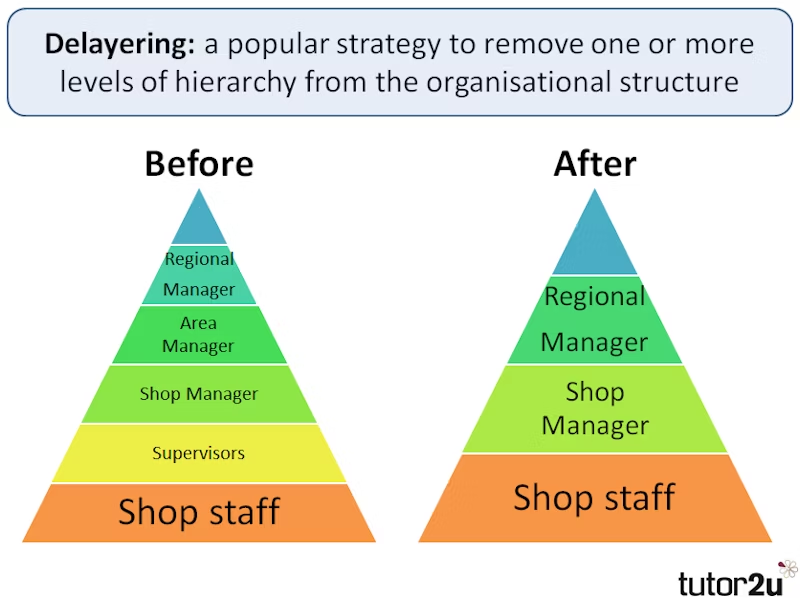Delayering is the process of removing layers of management to enhance organisational efficiency. This approach involves eliminating unnecessary levels of management, consolidating functions, or flattening the organisational structure. Delayering aims to improve communication and decision-making, reduce costs, and make the organisation more agile and responsive to environmental changes.
Why Do Companies Need to Delayer?
There are several compelling reasons why companies may need to delay decisions about new hires. One of the most pressing reasons is the current economic climate. With unemployment rates hovering around 8 per cent, companies need to be cautious about whom they bring on board. Hiring the wrong person can be costly in terms of both the time and money it takes to find a replacement and the negative impact a poor hire can have on the rest of the team.
Another reason to delay new hires is to allow sufficient time to properly assess candidates. It’s important to thoroughly understand candidates’ skills and personalities before deciding to hire them. Ensuring they are a good fit for the role and the company is crucial.
Finally, delaying new hires can provide a better sense of future needs. Waiting until the role and the company’s needs are more clearly defined increases the likelihood of finding the right person for the job.
What Are the Benefits of Delayering?

Delayering offers several key benefits:
- Cost Reduction: By eliminating unnecessary management positions, delayering can significantly reduce costs.
- Improved Communication and Decision-Making: Fewer management layers mean that communication is more direct, and decision-making processes are streamlined.
- Increased Efficiency and Effectiveness: Ensuring that employees are working on tasks best suited to their skills improves overall organisational efficiency.
In hierarchical structures, removing a layer of management can help reduce costs while maintaining the same level of output. This approach can:
- Save money on managerial wages.
- Make the business more responsive to change by reducing management layers.
Downsizing and Delayering
Downsizing is a related process where a firm closes down or merges aspects of its operations to reduce costs and remain competitive. Delayering specifically targets the removal of hierarchical layers between the highest and lowest organisational levels to boost operational efficiency, decrease the wage bill, and remove bureaucratic obstacles. Middle managers are often removed, giving senior managers easier oversight of the entire organisation.
Advantages of Delayering
- Increased Engagement and Motivation: Employees on the ground have more responsibility and decision-making power, leading to higher engagement and motivation.
- Enhanced Communication: With fewer management levels, information is less likely to get lost in translation, and bottom-up feedback is more likely to reach decision-makers.
Disadvantages of Delayering
Despite its benefits, delayering has drawbacks:
- Increased Control for Senior Leaders: Reduced oversight means that poor decision-making by senior leaders can have more significant effects.
- Suitability Issues: While flatter organisational structures may work well in some industries, they may be unsuitable for others.
- Impact on Morale: Redundancies associated with delayering can negatively affect worker morale.
Delayering alone often does not achieve the desired efficiencies. Combining delayering with other progressive measures, such as engagement programmes or cross-divisional working, can maximise its effectiveness.






